How to clean a coffee machine - expert tips to keep yours in good condition
Whether you have a pod or bean-to-cup version make sure you know how to clean a coffee machine to keep yours working like new

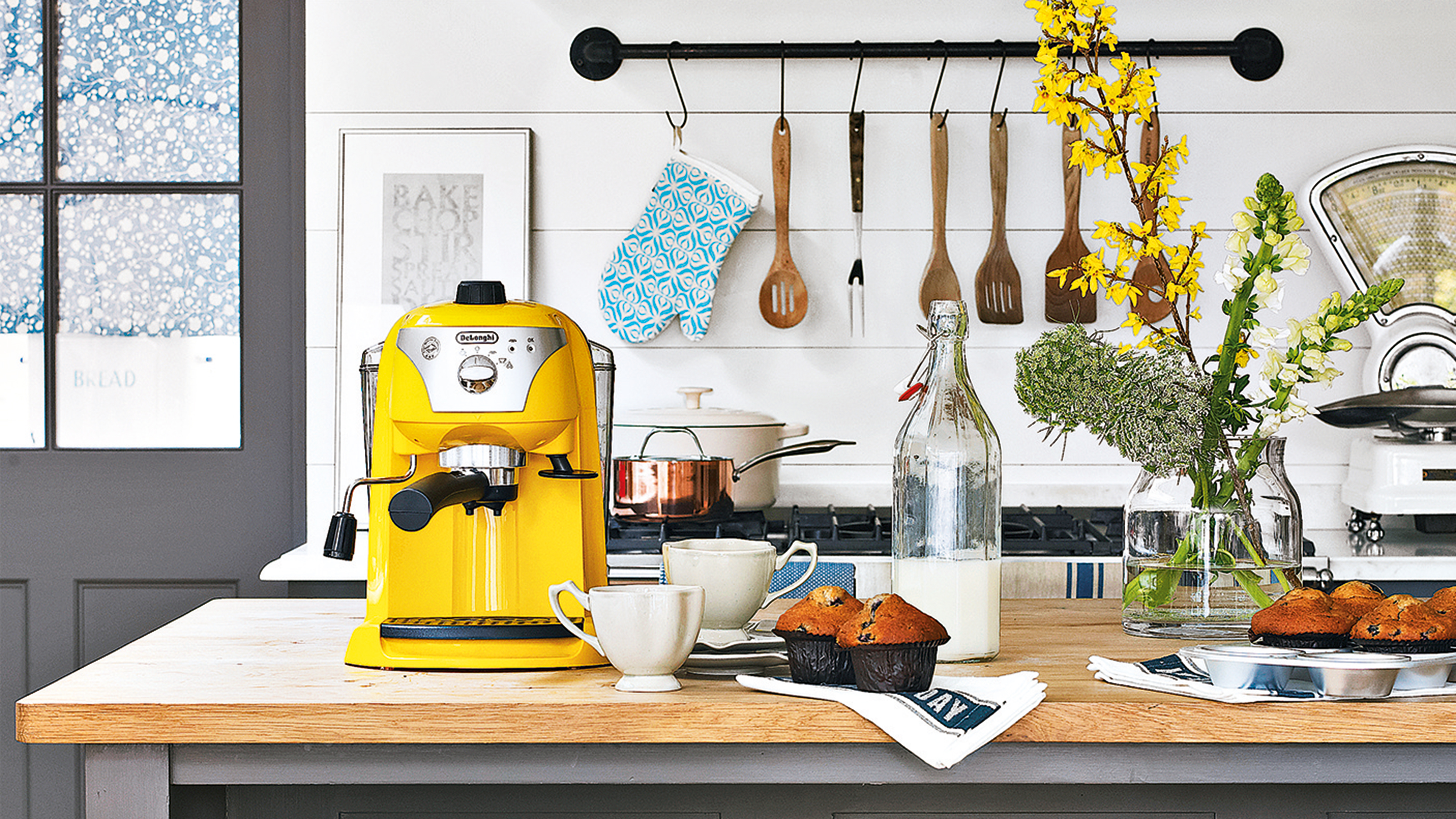
Many of us enjoy a barista-style coffee and with working at home now more common than ever, there's been a rise in sales for coffee machines. The best coffee machines to choose from include simple pod machines, espresso coffee machines or all singing and all dancing bean-to-cup models and this month is a great time to get a Black Friday coffee machine deal.
If you've recently set up a coffee bar in the corner as part of your kitchen ideas with a new machine, it's important to know how to clean your coffee machine properly so you can keep it in top condition.
'While all coffee machines will need cleaning, prevention is better than cure and the best thing you can do is use filtered water whenever you make your coffee,' says Sam Pearce, community manager at Chimney Fire Coffee .'This will help prevent limescale build-up (especially in hard water areas), and as a bonus will make your coffee taste better too.'
How to clean a coffee machine
If you've got your coffee machine set up, it helps to understand the best way to clean it. We spoke to the experts and get their advice on how to clean a coffee machine.
What you need to clean your coffee machine will depend on the type of machine you have. But these are some key things to have at home for cleaning a coffee machine.
Shopping list
- Jug
- Descaler (check manufacturer's guidelines for advice)
- Microfibre cloth
- Water
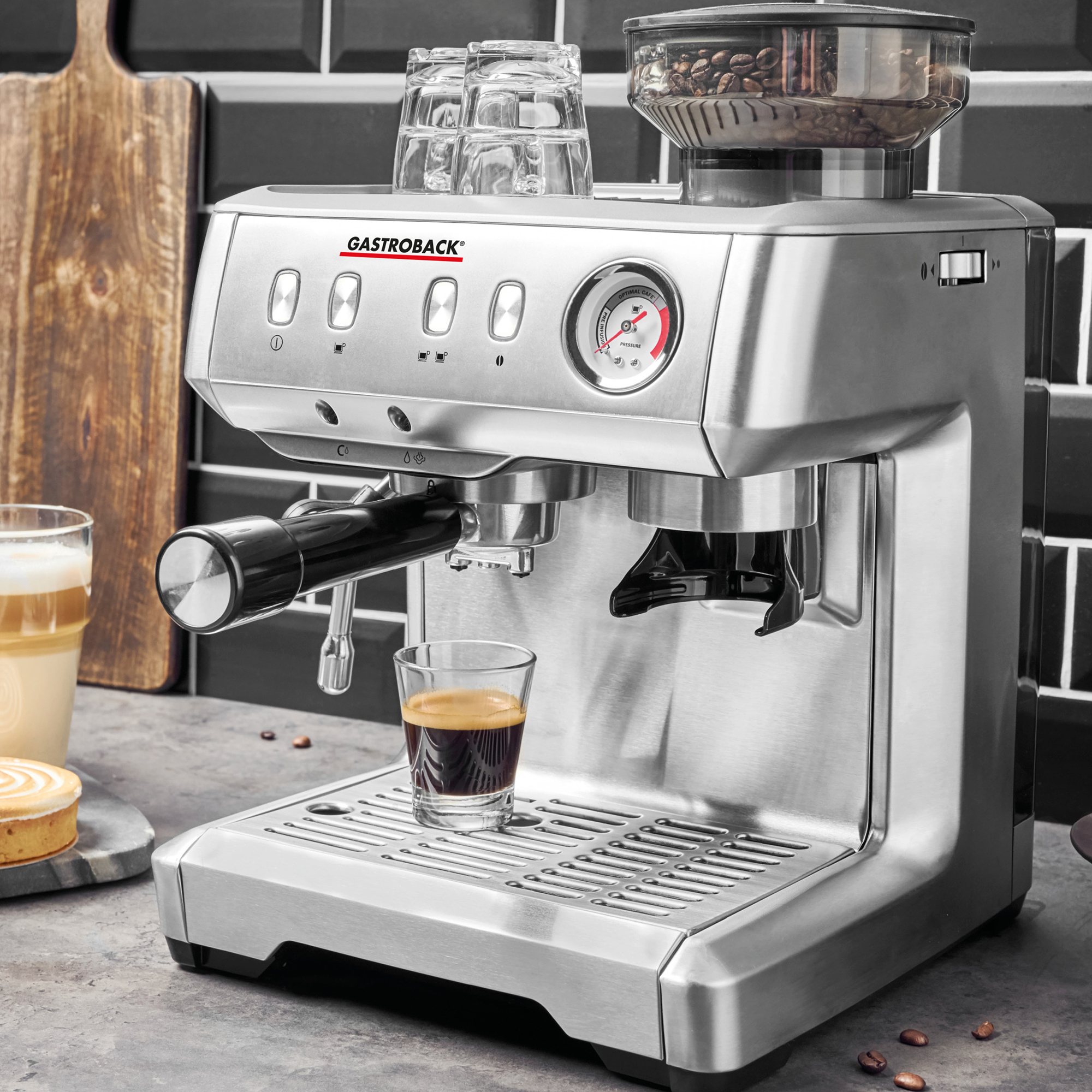
Espresso Barista coffee machine, £549.90, Gastroback.
How to clean a pod coffee machine
In order to keep your pod or capsule coffee machine running smoothly, Dave Cutler, head of training at Lavazza UK, suggests: 'It is good practice to run water through the machine after each use to get rid of residual coffee oils.' As well as flushing out your coffee machine after each use, regular descaling will keep it working efficiently.
1. Clean the water tank
Give the water tank a rinse out and clean, before filling with fresh water and reattaching to your machine.
Sign up to our newsletter for style inspiration, real homes, project and garden advice and shopping know-how
2. Be prepared
Place a jug or another suitable container under the coffee outlet. Make sure any used capsules or pods have been removed from the machine and rinse out the pod container.
3. Run the cleaning cycle
Check your instruction manual on how to descale a coffee machine and find out which descaling products should be used. Then run the cleaning cycle. If using a descaling solution, run a cycle with fresh water after to flush out any remaining cleaning liquid.
How to clean a bean-to-cup coffee machine
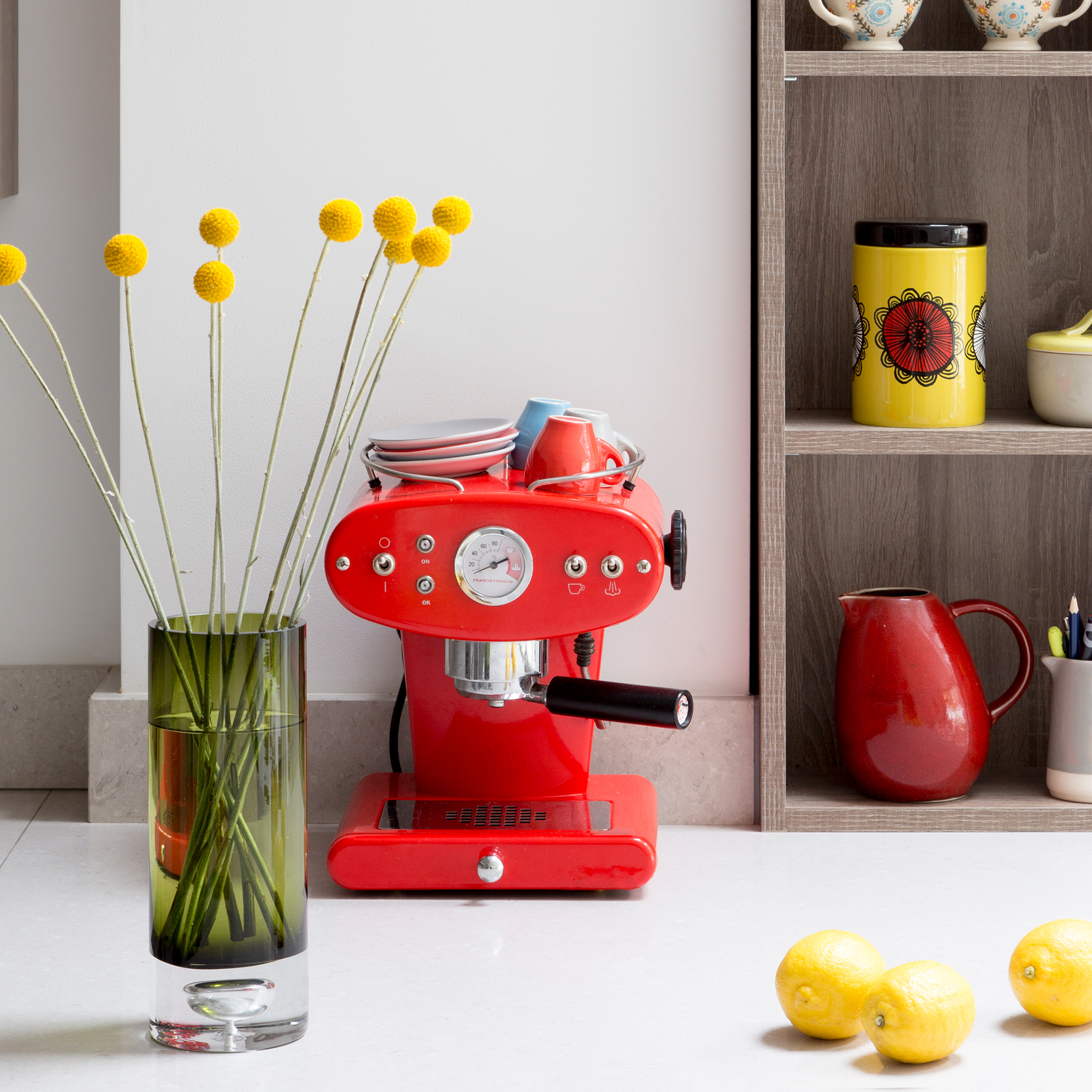
Most bean-to-cup coffee machines will have automatic cleaning and descaling cycles and will remind you when it's time to clean the machine by flashing up a notification. Below is a common way to clean your bean-to-cup or espresso coffee machine.
1. Replace the water filter
Remove the water tank from your coffee machine and if it includes a water filter, dispose of the old one. Give the water tank a thorough clean and rinse well.
2.Check your machine's cleaning cycle
Read through the cleaning instructions in your manual. If there is a programme for descaling, fill the water tank with descaling powder and water (using manufacturer recommended products) and run the descaling programme (make sure the water filter has been removed prior to this).
Use a jug or suitable container to collect any waste water and remember to descale the steam wand as well as the coffee component. Once the descaling programme has finished, rinse the water tank and add a new water filter (if your machine uses one) and fill with fresh water. Run the descaling programme again to flush out any descaling liquid.
3. Run a cleaning cycle
Some bean-to-cup machines will also have a cleaning cycle, which will back flush the machine and clean the group head and portafilter. This helps to remove any residual coffee oils and debris that has built up in the machine. Run the cycle following the manufacturer guidelines.
4. Wash the drip trays
Empty the drip trays and give them a good wash in warm soapy water. Use a damp microfibre cloth to wipe over the coffee machine, removing any coffee splatters and dried on milk.
5. Clean the milk tank
If your machine has a built-in milk tank, make sure you clean it after each use to prevent a build up of milk inside the machine. Most coffee machines will have a cleaning function programmed that can be run when needed. The milk tank itself can be washed in mild soapy water between uses, but check manufacturer guidelines for advice.
General cleaning tips for coffee machines
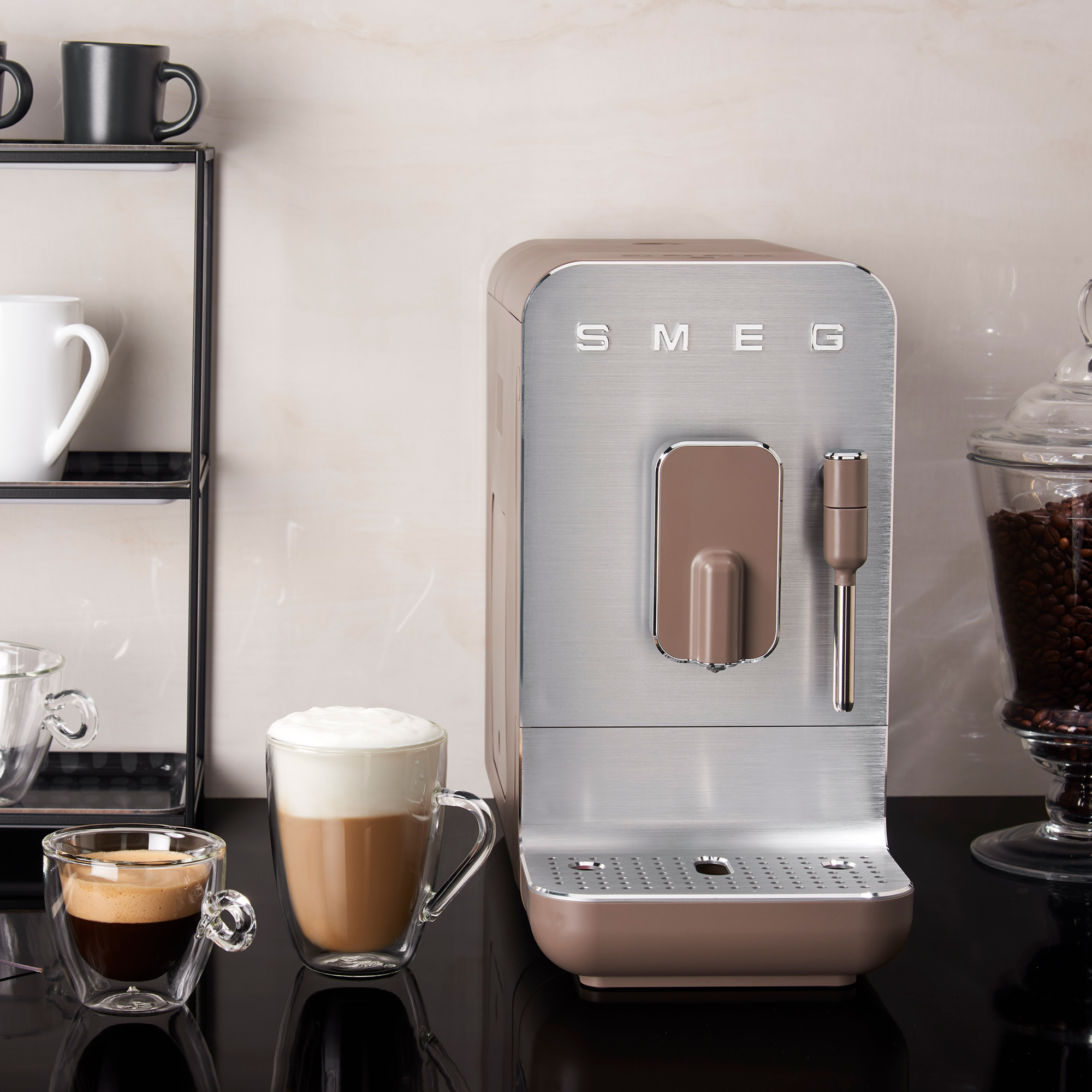
1. Keep your steam wand clean
If you're making a coffee with warmed milk, it's important to clean the steam wand after each use to prevent a build up of milk on the inside. Once you've warmed the milk, turn the steam wand on and aim at the drip tray, leaving the steam to flush through for a couple of seconds.
Switch off the steam wand and using a damp cloth, wipe over the steam wand to remove any stuck-on milk. Be careful as the steam wand will be hot. You can also soak the steam wand in a small jug of water and then wipe it clean if there is a build-up.
2. Flush out the portafilter
After making your espresso, empty the portafilter after each use and rinse out to remove any coffee grinds. Lock the portafilter back into place and run through some water to flush any coffee oils and residue.
Do coffee machines need cleaning?
Yes! By cleaning your coffee machine on a regular basis you will help to keep it in top condition. 'Coffee contains natural oils which gives the coffee its defining taste,' says Dave Cutler, head of training at Lavazza UK. 'However, coffee oils leave a residue behind in the machine, which after some time can go stale. This means that coffee machines should be cleaned regularly.'
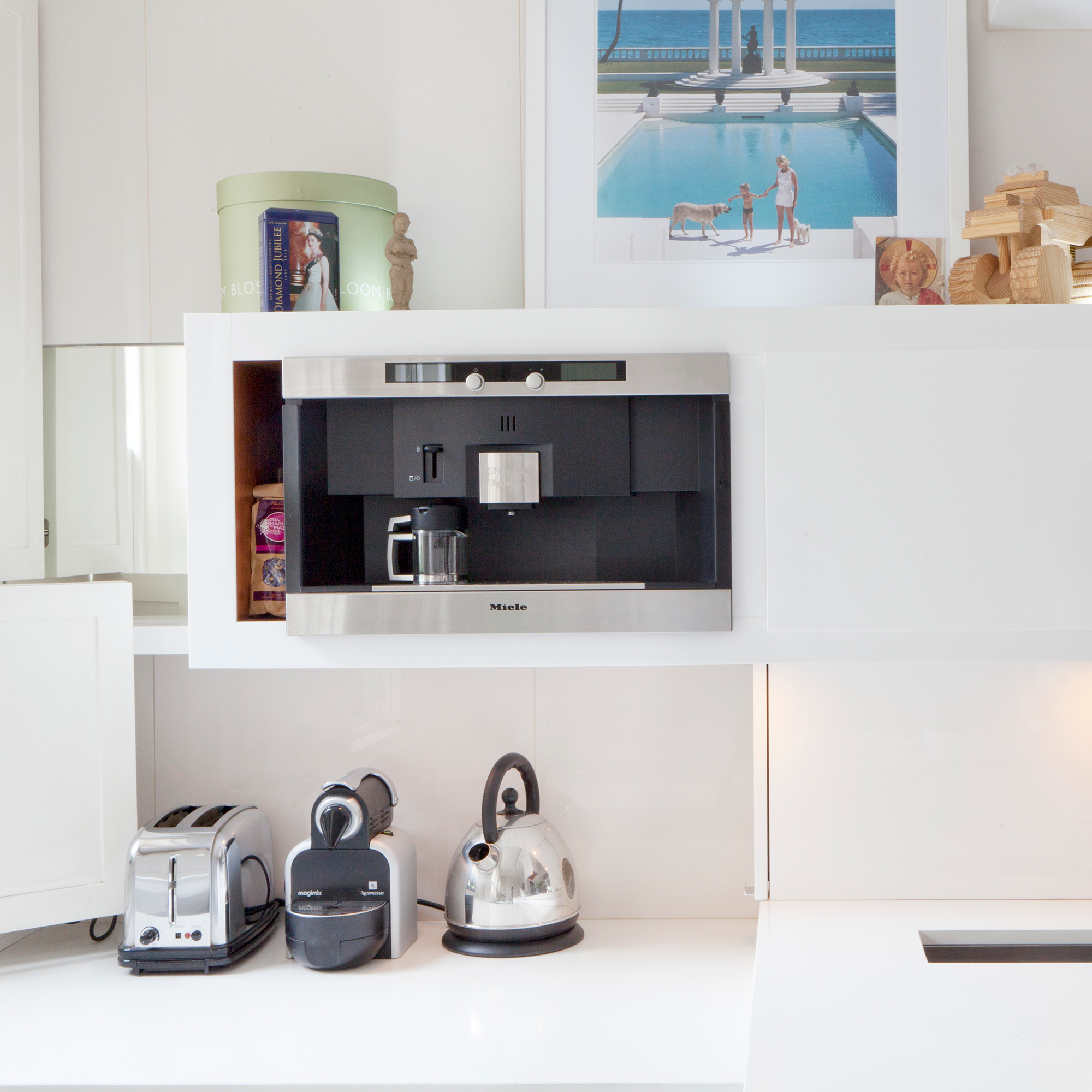
How often should you clean your coffee machine?
'If you use your coffee machine a moderate amount (a couple of times a day), then cleaning your coffee machine once a week will be fine,' says Sam Pearce, community manager at Chimney Fire Coffee. 'Some modern espresso machines will warn you when it's time to clean your machine, but it's good to get into a routine of regular cleaning.'
Sophie Lane, product training manager at Miele GB adds: 'If your coffee machine has a milk flask, ensure that this is removed and cleaned each day. Empty any water containers, drip trays and waste containers and give them a little rinse. Wipe over the spouts or coffee nozzles.'
Does vinegar damage a coffee machine?
'While white vinegar can work as a descaler for appliances such as kettles or smaller coffee pots, we don't recommend using this method for expensive espresso machines,' says Sam. 'It is difficult to see if a thorough job has been done as the internal pipes aren't visible to inspect, and you probably don't want to leave vinegar suspended inside the machine for too long.'
Dave Cutler adds: 'We would recommend using an approved chemical wash to clean your coffee machine to ensure that your machine lasts as long as possible. We would always recommend using approved cleaning products and following the manufacturer's guidelines on how to best clean your coffee machine. Vinegar has a strong taste profile, and you wouldn't want to taste it in your morning coffee.'

Amy Hodge has been working on interiors magazines for over 11 years. She's a freelance writer and sub editor who has worked for some of the UK's leading interiors magazines including Ideal Home, Style at Home and Country Homes & Interiors. She started at Style at Home just after it launched as food editor and is now chief sub editor for Ideal Home, Style at Home and Country Homes & Interiors.